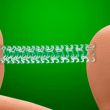Chronic total occlusions (CTOs) account for approximately 15-20% of patients with stable coronary artery disease. This field has seen various advances regarding treatment, leading to an improvement in the success rate of procedures. According to registries and randomized studies, the main indication for percutaneous coronary intervention (PCI) of CTO should be based more on clinical<a href="https://solaci.org/en/2023/07/24/eurocto-safety-and-benefit-at-3-years/" title="Read more" >...</a>
ABSORB IV – Improving Bioresorbable Scaffolds: A Long Road
5-year followup of bioresorbable scaffolds in selected and better prepared lesions (ABSORB IV). Historically, when comparing previously used therapies, such as conventional balloon angioplasty (BA) against bare metal stent (BMS) and later against drug eluting stent (DES) implantation, we see significantly improved outcomes. These advances have shown reduced recoil and more effective restenosis inhibition, compared<a href="https://solaci.org/en/2023/07/19/absorb-iv-improving-bioresorbable-scaffolds-a-long-road/" title="Read more" >...</a>
Transcatheter Mitral Valve Replacement vs. Medical Therapy
Mitral valve regurgitation (MR) is a common cause behind heart failure and is associated to hospitalization for heart failure and higher mortality. Transcatheter edge-to-edge repair (TEER), together with guideline-directed medical therapy (GDMT) has been shown beneficial in high risk patients, according to the COAPT study. However, there is a significant group of patients that make<a href="https://solaci.org/en/2023/07/04/transcatheter-mitral-valve-replacement-vs-medical-therapy/" title="Read more" >...</a>
VASC-OBSERVANT II Substudy: Impact of Vascular Complications after TAVR
At present, transcatheter aortic valve replacement (TAVR) has become increasingly common to treat severe symptomatic aortic stenosis, with the transfemoral approach being the most common access strategy, associated to better outcomes vs. other access sites. Even though vascular complication rates (VC) have dropped given increased operation experience and improved devices, such as the use of<a href="https://solaci.org/en/2023/06/27/vasc-observant-ii-substudy-impact-of-vascular-complications-after-tavr/" title="Read more" >...</a>
New Devices for Percutaneous Treatment of Native Aortic Regurgitation: Expanding Horizons
Severe aortic regurgitation (AR) may account for 20% to 30% of all surgical aortic valve replacements (SAVR) and is often associated with aortic stenosis (AS). Transcatheter treatment of these patients is limited due to anatomical factors such as root and annular dilation, large annular dimensions, and less calcification in the valve leaflets to serve as<a href="https://solaci.org/en/2023/06/26/new-devices-for-percutaneous-treatment-of-native-aortic-regurgitation-expanding-horizons/" title="Read more" >...</a>
Calcified Nodules and the Importance of OCT Categorization prior PCI
TLR associated factors in patients with calcified nodules. Patients with complex cardiomyopathies undergoing percutaneous coronary intervention are increasingly common, as is the case for calcified lesions and calcified nodules (CN). Procedure complexity not only involves planning, but also establishing patient prognosis, taking into consideration the fact that most target vessel events occur at long term<a href="https://solaci.org/en/2023/06/24/calcified-nodules-and-the-importance-of-oct-categorization-prior-pci/" title="Read more" >...</a>
Minimal Stent Area: New IVUS Parameter?
Intravascular Ultrasound (IVUS) has shown, in several studies, its great benefits for both restenosis and mortality reduction. Even though several variables have been studied, so far minimal stent area (MSA) has been disregarded as important. The OPTIVUS-Complex PCI looked at 961 patients with 1,957 lesions, and found 1.6% TLR incidence (30 lesions). There were no<a href="https://solaci.org/en/2023/06/14/minimal-stent-area-new-ivus-parameter/" title="Read more" >...</a>
TAVR: Does HALT Affect Follow-Up?
Transcatheter aortic valve replacement (TAVR) in low-risk patients has been shown to be superior or noninferior in randomized studies, but the presence of valvular thrombosis, in its different forms, has not been well analyzed, nor is there much information on its impact on evolution. Researchers conducted an analysis of the LTR study that included 200<a href="https://solaci.org/en/2023/06/07/tavr-does-halt-affect-follow-up/" title="Read more" >...</a>
EuroPCR 2023 | Intravascular Lithotripsy (IVL) Balloon in the Treatment of Underexpanded Stents
Calcified coronary plaque (CCP) is a challenge for interventional cardiology. Stent underexpansion (SU) commonly associated with CCP could predispose to stent thrombosis or restenosis. Currently, SU in severe CCP can be treated by rotational atherectomy, orbital atherectomy, balloon cutting/scoring, non-compliant high-pressure balloons, or intravascular lithotripsy (IVL). The aim of this meta-analysis was to determine the<a href="https://solaci.org/en/2023/05/22/europcr-2023-intravascular-lithotripsy-ivl-balloon-in-the-treatment-of-underexpanded-stents/" title="Read more" >...</a>
EuroPCR 2023 |TAVR in Cardiogenic Shock
Patients presenting aortic stenosis with cardiogenic shock are at extreme risk, with 70% mortality until the aortic obstruction is resolved, and taking into account they make poor transplant candidates. Safety and efficacy of TAVR in patients with cardiogenic shock remains unclear. The aim of this study was to assess events in patients undergoing TAVR with<a href="https://solaci.org/en/2023/05/17/europcr-2023-tavr-in-cardiogenic-shock/" title="Read more" >...</a>








